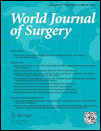Hand-Assisted Versus Pure Minimally-Invasive Distal Pancreatectomy: Is There a Downside to Lending a Hand?
Supplementary Information: The online version contains supplementary material available at https://doi.org/10.1007/s00268-022-06835-z.
Abstract
Background
Hand-assisted laparoscopic distal pancreatectomy (HALDP) is suggested to offer similar outcomes to pure laparoscopic distal pancreatectomy (LDP). However, given the longer midline incision, it is unclear whether HALDP increases the risk of postoperative hernia. Our aim was to determine the risk of postoperative incisional hernia development after HALDP.
Methods
We retrospectively collected data from patients undergoing HALDP or LDP at a single center (2012–2020). Primary endpoints were postoperative incisional hernia and operative time. All patients had at minimum six months of follow-up. Outcomes were compared using unadjusted and multivariable regression analyses.
Results
Ninety-five patients who underwent laparoscopic distal pancreatectomy were retrospectively identified. Forty-one patients (43%) underwent HALDP. Patients with HALDP were older (median, 67 vs. 61 years, p = 0.02). Sex, race, Body Mass Index (median, 27 vs. 26), receipt of neoadjuvant chemotherapy, gland texture, wound infection rates, postoperative pancreatic fistula, overall complications, and hospital length-of-stay were similar between HALDP and LDP (all p > 0.05). In unadjusted analysis, operative times were shorter for HALDP (164 vs. 276 min, p < 0.001), but after adjustment, did not differ significantly (MR 0.73; 0.49–1.07, p = 0.1). Unadjusted incidence of hernia was higher in HALDP versus LDP (60% vs. 24%, p = 0.004). After adjustment, HALDP was associated with an increased odds of developing hernia (OR 7.52; 95% CI 1.54–36.8, p = 0.014). After propensity score matching, odds of hernia development remained higher for HALDP (OR 4.62; 95% CI 1.28–16.65, p = 0.031) p = 0.03).
Conclusions
Compared with LDP, HALDP was associated with increased likelihood of postoperative hernia with insufficient evidence that HALDP shortens operative times. Our results suggest that HALDP may not be equivalent to LDP.




